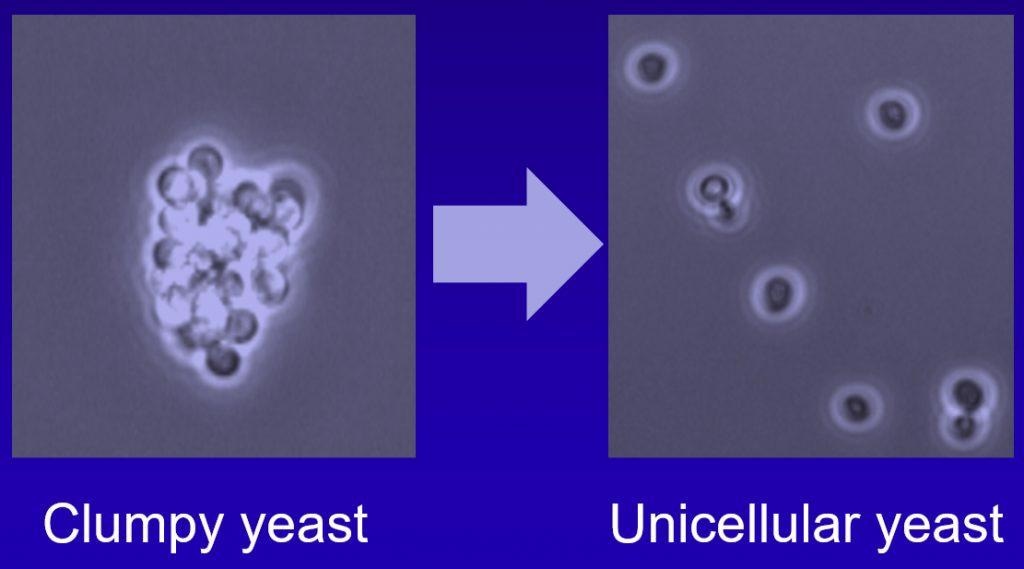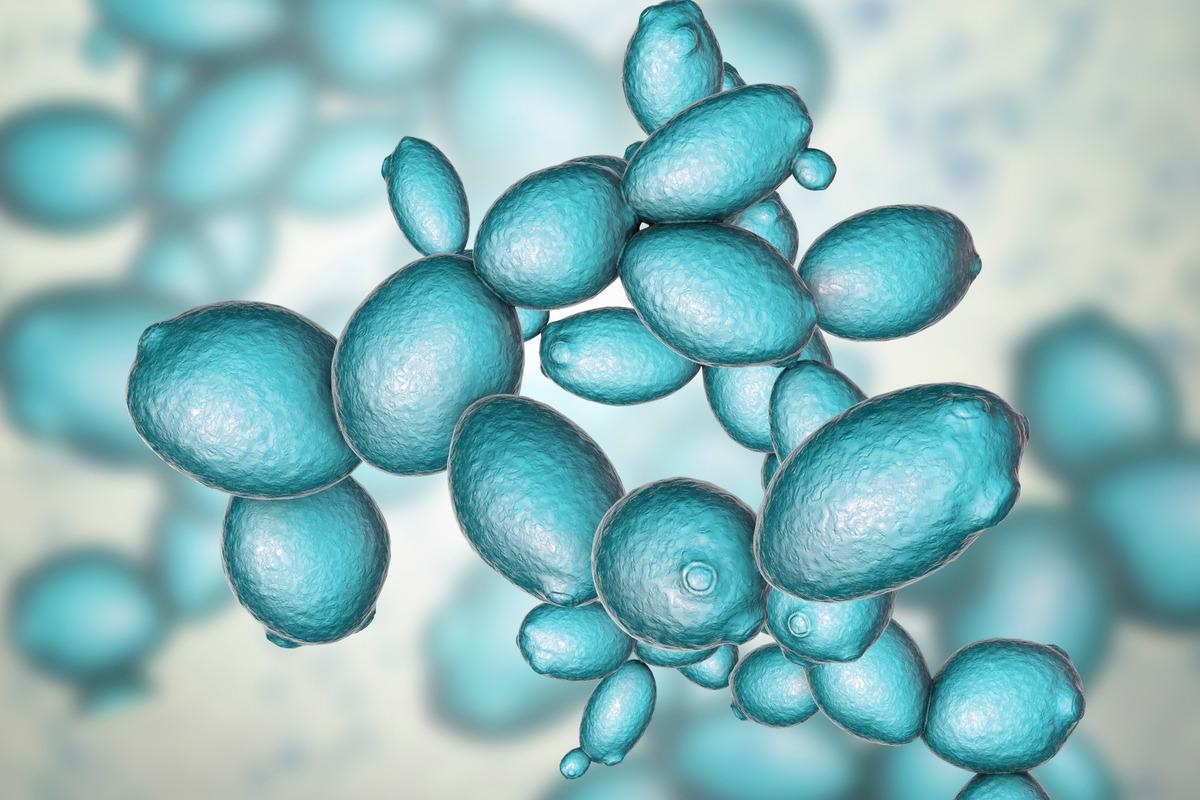Reviewed by Danielle Ellis, B.Sc.Apr 18 2022
A recent study indicates that regulating and deleting a particular gene (AMN1) in yeast might lay the groundwork for a novel method of addressing drug resistance in microbial infections and cancer. The work, headed by Gábor Balázsi, PhD, of the Stony Brook University and published in the journal Communications Biology, focuses on deconstructing cell clusters, which might act as an additional barrier to drug resistance during the disease process.
 Image of clustering yeast cells and yeast cells separated after removal of the AMN1 gene. Image Credit: Gábor Balázsi.
Image of clustering yeast cells and yeast cells separated after removal of the AMN1 gene. Image Credit: Gábor Balázsi.
Drug resistance is a major public health issue across the world. Understanding how bacteria and cancer cells resist drugs can aid in the creation of more effective treatments. While scientists have learned a lot about distinct molecular mechanisms of resistance, multicellular systems that resist drug therapies have proven to be more difficult to unravel. One of these multicellular resistance mechanisms is a phenomenon in which cells stick together in clusters, reducing drug absorption.
Balázsi and colleagues employed antifungal drug resistance and cell clustering in budding yeast (Saccharomyces cerevisiae) as a research paradigm. The AMN1 gene, which was essential for cell clustering in this model, was deleted.
We found that after we deleted this gene, cells stayed alone and no multicellular clumps formed. Furthermore, the resulting unicellular yeast was more sensitive to four common antifungal chemicals. This suggests that disrupting multicellular clumps may lead to more effective treatments.”
Gábor Balázsi, Study Lead Author and Henry Laufer Professor, Louis and Beatrice Center for Physical & Quantitative Biology, Stony Brook University
Gábor Balázsi is also a Professor in the Department of Biomedical Engineering at the Renaissance School of Medicine at Stony Brook University.

Image Credit: Kateryna Kon/Shutterstock.com
Lesia Guinn and Evan Lo, co-authors of the study, worked with Balázsi to conduct trials and construct mathematical models to quantify drug effects and separate the effects of the AMN1 deletion.
Overall, the data imply that AMN1 might be a potential antifungal target for cluster-forming infectious fungi.
Similar cluster-disruptive techniques might be created and evaluated in the future to better eradicate cluster-forming infectious microbes or migrating tumor cell clusters, according to scientists.
Source:
Journal reference:
Guinn, L., et al. (2022) Drug-dependent growth curve reshaping reveals mechanisms of antifungal resistance in Saccharomyces cerevisiae. Communications Biology. doi.org/10.1038/s42003-022-03228-9.